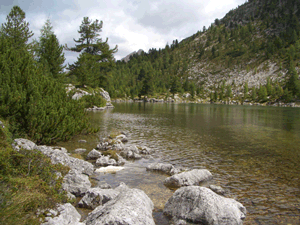Payments for ecosystem services
The term "Payments for Ecosystem Services" (PES) is a denomination that includes a whole range of incentives and market mechanisms designed to translate non-market environmental values into real financial incentives for local actors so that, with voluntary certification, best practices, environmental communication, promote and support the maintenance of multiple ecological functions offered by biodiversity and natural capital.
 A concrete example of a successful PES, one of the first, is the agreement freely entered into between the municipal company for the provision of water services in the city of New York and forest owners of the catchment basin. Under this agreement the owners have committed themselves to manage their forests in accordance with a program that includes forest management practices which have positive effects on the constancy of the qualitative and quantitative water runoff. The compensation for ecosystem services performed shall be paid through an additional on the water tariff, which is paid by end users. The implementation of the program has allowed a partial cost savings of about 6 to 9 billion dollars needed to build water treatment plants, a cost that would still be burdened citizens, while forest owners have been able to count on a steady annual flow income.
A concrete example of a successful PES, one of the first, is the agreement freely entered into between the municipal company for the provision of water services in the city of New York and forest owners of the catchment basin. Under this agreement the owners have committed themselves to manage their forests in accordance with a program that includes forest management practices which have positive effects on the constancy of the qualitative and quantitative water runoff. The compensation for ecosystem services performed shall be paid through an additional on the water tariff, which is paid by end users. The implementation of the program has allowed a partial cost savings of about 6 to 9 billion dollars needed to build water treatment plants, a cost that would still be burdened citizens, while forest owners have been able to count on a steady annual flow income.
The PES are therefore an effective management tool that allows you to internalize the environmental costs and benefits in decision-making through a voluntary contractual transaction between the supplier (seller of the service) and the buyer for a given ecosystem service or for a use or management soil in order to make sure the service itself and at the same time can lead to real sustainable levels of quality of the landscape.
Agriculture plays an important role because it appears both as a "buyer" of many ecosystem services (e.g. pollination, nutrient cycling, natural control of potentially harmful organisms, etc.) and as a "supplier" of those services that are more properly called «agro-ecosystem», such as the agricultural landscape, the typical products and the food safety.
